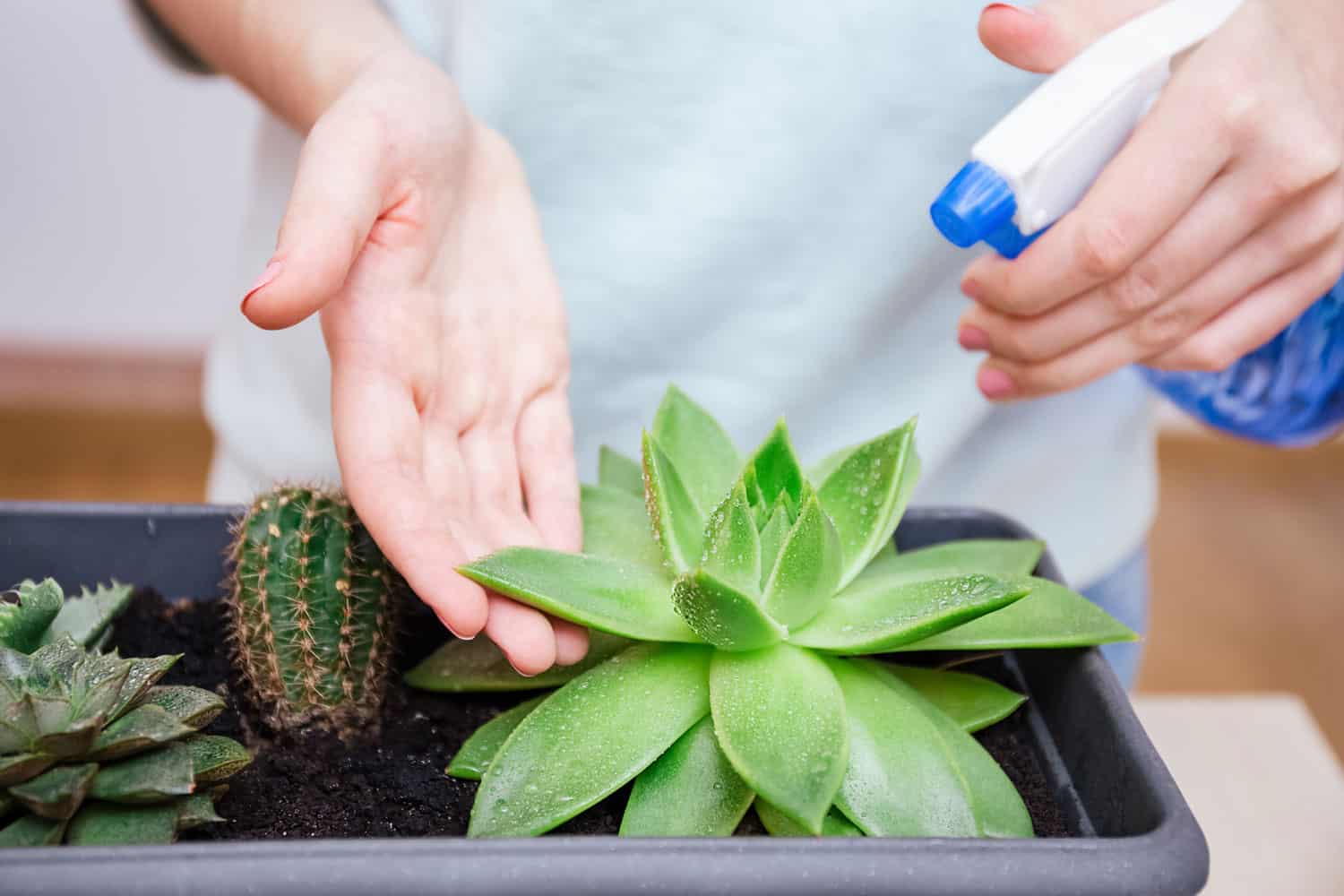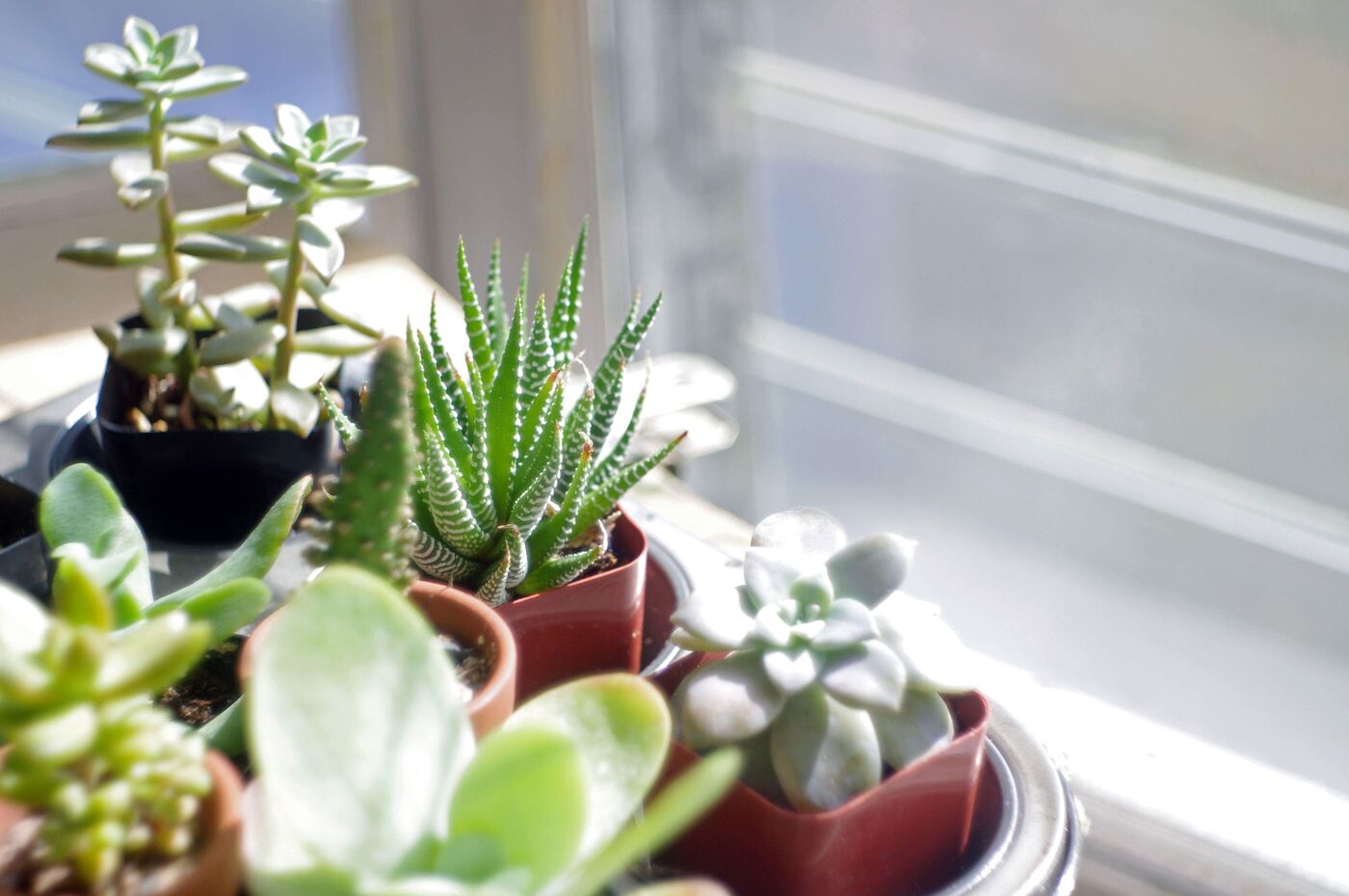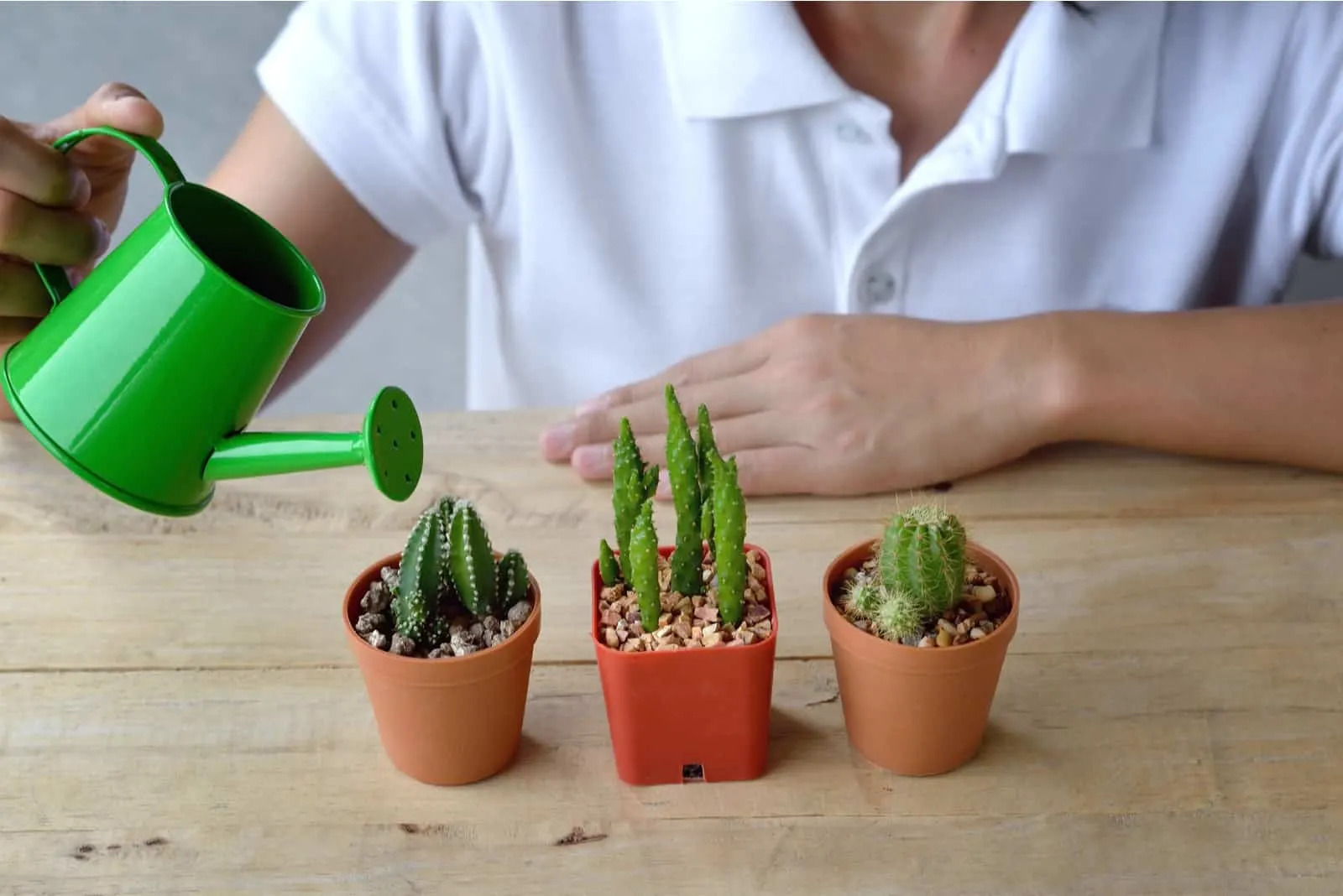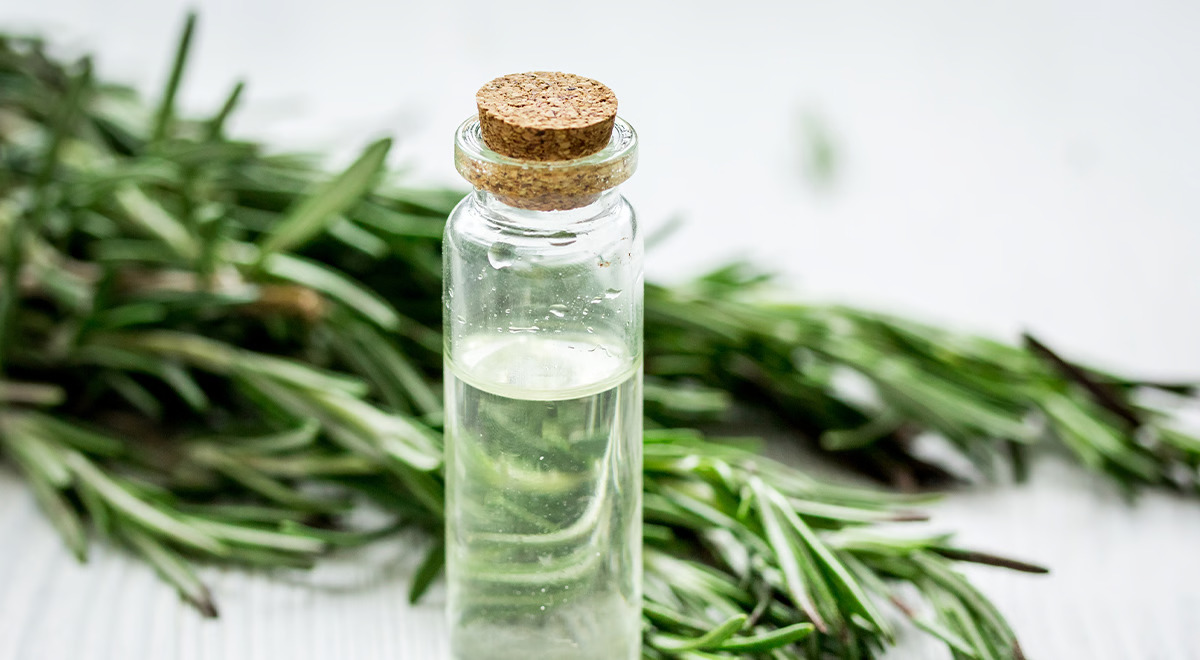Home>Gardening Techniques>Plant Care>How Often Should You Mist Succulents


Plant Care
How Often Should You Mist Succulents
Published: December 25, 2023
Discover the best plant care practices for misting succulents. Learn how often to properly mist your succulents to ensure their health and longevity.
(Many of the links in this article redirect to a specific reviewed product. Your purchase of these products through affiliate links helps to generate commission for Chicagolandgardening.com, at no extra cost. Learn more)
Table of Contents
Introduction
Welcome to the world of succulents! These fascinating plants have gained immense popularity over the years, thanks to their unique shapes, vibrant colors, and ability to thrive in various environments. If you’re new to succulent care, one important aspect to understand is the role of misting in their overall well-being.
Succulents are a diverse group of plants that store water in their leaves, stems, or roots, allowing them to survive in arid conditions. They have adapted to dry climates, making them ideal choices for indoor gardens or outdoor landscapes with limited water resources.
So, why is misting important for succulents? Well, despite their ability to withstand drought-like conditions, these plants still require a certain amount of moisture to stay healthy and thrive. Misting is one of the ways to provide them with the requisite humidity.
However, it’s crucial to strike the right balance when it comes to misting succulents. Too much or too little moisture can have adverse effects on their growth and overall health. Therefore, understanding the factors that influence misting frequency is essential for successful succulent care.
In this article, we will delve into the factors you should consider, signs of overwatering and underwatering, common misting mistakes to avoid, and best practices for effectively misting your succulents. By the end, you’ll feel confident in your ability to maintain healthy and happy succulents through proper misting techniques.
What Are Succulents
Succulents are a unique group of plants characterized by their ability to store water in their leaves, stems, or roots. This water storage adaptation allows them to survive in dry and arid environments where other plants would struggle. The word “succulent” is derived from the Latin word “succus,” which means juice or sap, a nod to the plant’s ability to retain moisture.
There are thousands of different succulent species, each with its own distinctive shape, color, and texture. Some popular examples include Aloe vera, Echeveria, Sedum, and Haworthia. These plants come in a variety of sizes, ranging from small rosettes to tall and imposing architectural forms.
One of the defining features of succulents is their fleshy leaves, which are often thick and waxy. These leaves act as reservoirs, storing water that the plant can draw upon during periods of drought. Additionally, the presence of specialized cells called succulent parenchyma cells allows succulents to retain water more effectively.
Another fascinating characteristic of succulents is their unique growth patterns. Some succulents, like the Sempervivum species, produce offsets or “pups” that can be separated and replanted to propagate new plants. Others, like the Crassula ovata or Jade plant, develop thick, gnarled trunks over time. These growth patterns add to the allure and charm of these already captivating plants.
Succulents are not only cherished for their beauty but also for their resilience and adaptability. They are capable of thriving in a wide range of environments, from dry and desert-like landscapes to indoor settings with controlled humidity. This versatility, combined with their low maintenance requirements, has made succulents a favorite choice for both novice and experienced plant enthusiasts alike.
Now that you have a better understanding of what succulents are, let’s explore the importance of misting in maintaining their health and vitality.
Why Mist Succulents
Misting is an essential practice in succulent care that aids in providing the necessary humidity for these unique plants. While succulents have adapted to store water in their leaves, they still require some level of moisture to thrive. Here are a few reasons why misting is beneficial for succulents:
- Prevents dehydration: Succulents, despite their water storage capabilities, can still experience dehydration. Misting helps replenish the moisture lost through evaporation and ensures that the plants remain properly hydrated.
- Creates a microclimate: Misting creates a temporary increase in humidity around the plants, especially in dry environments or during hot weather. This mimics their natural habitat and helps create a more favorable microclimate for optimal growth.
- Aids in propagation: Misting plays a crucial role in succulent propagation. It provides the necessary moisture for leaf cuttings or offsets to develop roots and establish themselves as new plants.
- Enhances leaf health: Misting helps remove dust, debris, and pests that may accumulate on the leaves of succulents. This not only keeps the plants clean but also allows them to absorb sunlight more efficiently for photosynthesis.
- Supports optimal growth: Providing adequate humidity through misting can promote healthy growth in succulents. It encourages root development, leaf expansion, and overall vigor, resulting in robust and vibrant plants.
It’s worth noting that not all succulents require misting. Some species, such as certain cacti, prefer a drier environment and can be more sensitive to excess moisture. It is important to research the specific needs of your succulent species to determine if misting is suitable for them.
Now that we understand the reasons behind misting succulents, let’s explore the factors to consider when determining how often to mist these plants.
Factors to Consider
When it comes to determining the frequency of misting your succulents, several factors come into play. These factors can vary from one succulent species to another, as well as the environmental conditions in which they are grown. Here are a few key factors to consider:
- Succulent species: Different succulent species have varying moisture requirements. Some prefer drier conditions and may not need frequent misting, while others thrive in more humid environments and may benefit from regular misting sessions. Research the specific needs of your succulent species to better understand their moisture preferences.
- Environmental conditions: The climate and conditions in your location can greatly affect the frequency of misting. In dry and arid climates, where the air is naturally dry, succulents may require more frequent misting to maintain adequate humidity. On the other hand, in humid environments, the need for misting might be reduced.
- Seasonal changes: Succulents experience different growth patterns and moisture requirements throughout the year. During warmer months or the active growing season, succulents may benefit from more frequent misting to support their growth. In contrast, during colder months or dormancy periods, when their metabolism slows down, misting can be reduced to avoid overwatering.
- Container and soil: The type of container and soil used can impact the moisture retention and drainage of your succulents. Containers with drainage holes and well-draining soil mixtures allow excess water to escape more efficiently, reducing the need for frequent misting compared to succulents planted in containers without proper drainage.
- Indoor vs. outdoor cultivation: The location where you grow your succulents can also influence misting frequency. Indoor environments tend to have lower humidity levels, especially during winter months when heating systems are in use. As a result, indoor succulents may require more frequent misting compared to those grown outdoors where natural humidity levels are higher.
By taking these factors into account, you can better assess the moisture needs of your succulents and determine an appropriate misting schedule. However, keep in mind that these factors are not set in stone, and it may require some trial and error to find the optimal misting frequency for your specific succulents.
Next, let’s explore how often you should mist your succulents to provide them with the right amount of moisture without causing harm.
How Often to Mist Succulents
While there is no one-size-fits-all answer to the question of how often to mist succulents, there are general guidelines you can follow based on the factors we discussed earlier. Here are some considerations when determining the frequency of misting:
- Start with a conservative approach: It’s generally recommended to start with a less frequent misting schedule and adjust accordingly. Begin by misting your succulents once or twice a week and observe how they respond. Monitor the soil moisture level and the appearance of the leaves to evaluate if they require more or less frequent misting.
- Observe the moisture level of the soil: Before misting, check the moisture level of the soil by sticking your finger about an inch into the soil. If it feels dry, it may be an indication that your succulent needs some moisture. However, if the soil is still damp, it’s best to hold off on misting until it has dried out.
- Pay attention to the appearance of the leaves: The leaves of a well-hydrated succulent should look plump and turgid. If the leaves start to appear wrinkled or shriveled, it may be a sign that your succulent needs more frequent misting. However, be cautious not to overwater, as this can lead to root rot and other issues.
- Consider environmental factors: Adjust the frequency of misting based on the humidity levels in your environment. If you live in a dry climate or have low humidity indoors, you may need to mist more often to compensate for the lack of natural moisture. Similarly, if you have a high humidity environment, you may need to mist less frequently.
- Adjust for seasonal changes: Succulents have different growth patterns throughout the year. During the active growing season, succulents typically require more frequent misting, while during dormancy or colder months, misting can be reduced to avoid overwatering.
Remember, the goal is to provide the right amount of moisture without causing waterlogged conditions or promoting the growth of harmful fungi and pests. Regularly assess your succulents’ response to misting and adjust your routine accordingly.
Now that we know how often to mist succulents, let’s explore the signs of overwatering and underwatering, so you can adjust your misting practices accordingly.
Signs of Overwatering Succulents
Overwatering is one of the most common mistakes when it comes to succulent care. While succulents are adapted to withstand periods of drought, they are not immune to the negative effects of excessive moisture. Here are some signs that your succulent may be suffering from overwatering:
- Yellowing and wilting leaves: One of the earliest signs of overwatering is yellowing or wilting leaves. When succulents are consistently exposed to excess moisture, their roots can become saturated, leading to root rot. As a result, the plants are unable to absorb water properly and exhibit signs of dehydration.
- Soft and mushy leaves: Overwatered succulents may develop soft and mushy leaves, which is a clear indication that the plant is retaining too much water. These leaves can easily become damaged or break off, and the overall plant structure may become weak and unstable.
- Root rot: Excessive moisture in the soil can lead to root rot, a fungal infection that can be fatal to succulents. If you notice a foul smell coming from the soil or observe blackened, mushy roots when you remove the plant from its pot, it’s likely a sign of root rot caused by overwatering.
- Pest infestation: Overwatered plants are more susceptible to pest infestations, such as fungus gnats and mealybugs. These pests thrive in damp conditions and can cause further damage to already weakened succulents. If you notice an increase in pest activity, it may be an indicator of overwatering.
- Mold and fungal growth: Excessive moisture encourages the growth of mold and fungus on the soil surface or around the base of the plant. If you notice fuzzy white or black patches, it is a sign that the moisture levels are too high and need to be adjusted.
If you notice any of these signs, it’s crucial to take immediate action to correct the situation. Start by reducing the frequency of watering and allowing the soil to dry out between watering sessions. If the root rot is severe, you may need to repot the succulent in fresh, well-draining soil, trimming away any affected roots.
Now that we’ve explored the signs of overwatering, let’s discuss the signs of underwatering succulents to ensure that you provide them with adequate moisture.
Signs of Underwatering Succulents
While succulents are known for their ability to withstand drought-like conditions, they still require regular watering to thrive. Underwatering, or not providing enough moisture, can also have detrimental effects on these resilient plants. Here are some signs that your succulent may be suffering from underwatering:
- Wrinkled and shriveled leaves: One of the most noticeable signs of underwatering is when the leaves of your succulent start to wrinkle and appear shriveled. This is the plant’s way of conserving water and indicates that it is not getting enough moisture.
- Stunted or slow growth: When succulents do not receive adequate water, their growth can become stunted. You may notice that your plant is not producing new leaves or that its overall size has remained the same for an extended period.
- Drooping or wilting: Similar to overwatered succulents, underwatered plants may also exhibit wilting or drooping leaves. However, the leaves of underwatered succulents tend to retain their firmness and can quickly recover once provided with sufficient water.
- Roots coming out of the soil: Succulents experiencing prolonged underwatering may exhibit “rooting out” behavior, where the roots start growing above the soil surface in search of moisture. This is the plant’s attempt to find water when it is not available in the soil.
- Leaf drop: When succulents are underwatered, they may shed their older leaves to conserve water and redirect nutrients to the surviving parts of the plant. If you notice leaves dropping off your succulent, it may be a sign that it needs more frequent watering.
- Dry and brittle leaves: Underwatered succulents may develop dry and brittle leaves that are more prone to breakage. These leaves may lose their vibrancy and appear dull in color.
If you observe any of these signs, it’s essential to adjust your watering routine to ensure your succulents receive adequate moisture. Increase the frequency of watering, but be mindful not to overwater. Monitor the soil moisture levels, and make sure the water reaches the plant’s roots without creating waterlogged conditions.
Understanding the signs of underwatering and overwatering will help you fine-tune your watering practices and ensure the optimal health of your succulents. Now, let’s discuss some common misting mistakes to avoid when caring for these plants.
Mistakes to Avoid When Misting Succulents
Misting can be a beneficial practice for succulents, but it’s important to avoid certain common mistakes that can potentially harm your plants. By being aware of these mistakes, you can provide effective misting without causing any adverse effects. Here are some mistakes to avoid when misting succulents:
- Over-misting: One of the most common mistakes is over-misting succulents. While succulents appreciate some humidity, excessive moisture can lead to root rot and other issues. Avoid misting your succulents too frequently, especially if the surrounding environment already has high humidity.
- Misting in the wrong time of day: Misting during the peak of the day when the sun is strongest can lead to water droplets acting as magnifying glasses, causing sunburn on the leaves. It’s best to mist early in the morning or late in the afternoon to give the water time to evaporate before the intense sunlight hits the leaves.
- Misting too close to the plant: When misting succulents, it is important to avoid spraying water directly onto the leaves, especially in colder environments or during the evenings. Water sitting on the leaves for an extended period can lead to fungal or bacterial infections. Instead, mist the air around the plant to provide humidity without directly wetting the leaves.
- Using hard water or tap water: Succulents are sensitive to minerals and salts found in tap water or hard water. Using these types of water for misting can result in mineral buildup on the leaves and in the soil, which can harm the plants over time. It’s better to use filtered or distilled water for misting whenever possible.
- Misting during their dormant period: During the dormant period or winter months, succulents generally require less moisture. Over-misting during this time can lead to waterlogged roots and cause the plants to rot. Adapt your misting schedule to the seasonal changes and reduce misting during the dormant period.
- Misting without considering airflow: Proper airflow is essential for succulents to prevent the buildup of excess moisture. Avoid misting succulents in enclosed spaces or areas with poor ventilation, as this can lead to the growth of mold or fungal diseases. Make sure the area around your succulents has adequate airflow to allow the mist to evaporate.
By avoiding these common misting mistakes, you can provide your succulents with the appropriate level of humidity without causing harm or compromising their health. Now, let’s discuss some best practices for effectively misting succulents.
Best Practices for Misting Succulents
To ensure the well-being of your succulents and to provide them with the proper level of moisture through misting, here are some best practices to follow:
- Use a fine mist sprayer: When misting succulents, use a fine mist sprayer rather than a heavy spray. This will help distribute the water more evenly and prevent excessive saturation of the soil or leaves.
- Mist the surrounding air: Instead of directly spraying water onto the leaves, focus on misting the air around the succulents. This helps to increase humidity without causing water to linger on the leaves, reducing the risk of fungal or bacterial infections.
- Mist early in the day: Aim to mist your succulents early in the morning. This allows time for any excess moisture to evaporate before the heat of the day, reducing the risk of sunburn and optimizing the absorption of nutrients through the leaves.
- Use distilled or filtered water: To prevent the accumulation of minerals or salts on the leaves or in the soil, it is best to use distilled or filtered water for misting. This helps avoid potential damage from tap water or hard water deposits.
- Consider the seasonal needs: Adjust your misting frequency according to the seasonal changes and the specific requirements of your succulents. In warmer months or during active growth periods, you may need to mist more frequently, while in colder months or during dormancy, reduce misting to avoid overwatering.
- Monitor the soil moisture: Regularly check the moisture level of the soil to determine the need for misting. Stick your finger into the soil up to an inch to assess if it feels dry before deciding to mist. Avoid misting if the soil is still damp from the previous watering.
- Provide adequate airflow: Good air circulation is crucial for succulents, even when misting. Ensure that the area around your succulents has proper ventilation to allow for the evaporation of moisture. This helps prevent the growth of mold or fungus and creates an overall healthier environment for your plants.
By following these best practices, you can provide your succulents with the right amount of moisture through misting. Remember to adjust your misting routine based on the specific needs of your succulent species and the environmental conditions in which they are grown.
Now that you’re equipped with the knowledge of misting best practices, you can confidently care for your succulents and help them thrive. In the end, finding the proper balance in misting your succulents is essential to their overall health and longevity.
Conclusion
Misting is a valuable technique for maintaining the health and vitality of your succulents. By providing the necessary moisture, misting can enhance their growth, prevent dehydration, and create a more favorable microclimate. However, it is crucial to understand the needs of your succulents and the factors that influence misting frequency.
Consider the succulent species, environmental conditions, seasonal changes, container and soil, and indoor/outdoor cultivation. These factors will help determine how often to mist your succulents effectively. It’s also important to be mindful of the signs of overwatering and underwatering, as well as the common misting mistakes to avoid.
Remember to mist conservatively, monitor the moisture levels, and provide adequate airflow to prevent issues like root rot or fungal diseases. Use a fine mist sprayer and mist the air around the plants rather than directly on the leaves. Consider using distilled or filtered water to avoid mineral build-up.
With these best practices in mind, you can ensure that your succulents receive the proper amount of moisture while still maintaining their resilience and unique beauty. Your efforts in misting will be rewarded with healthy, vibrant succulents that bring joy to your indoor or outdoor spaces.
So, go ahead and embrace the art of misting succulents. Watch as they thrive and display their incredible ability to adapt and flourish, adding a touch of natural beauty to your home or garden.









